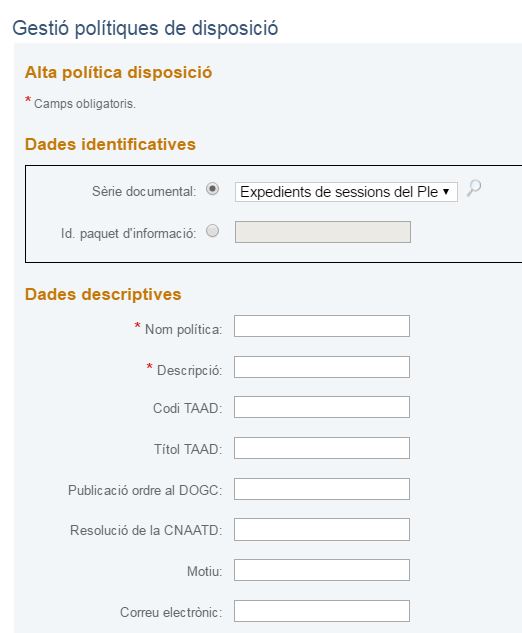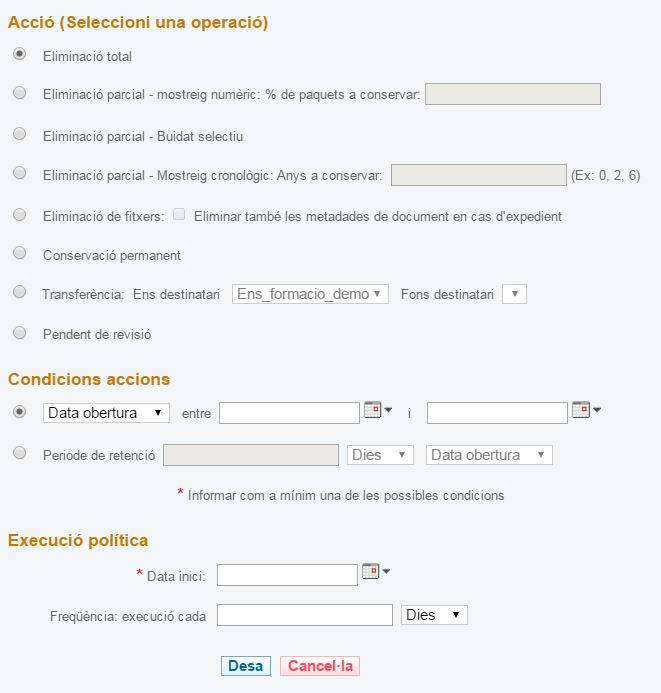User type: archivist
Retention and disposition policies determine the period of time that PIAs must remain on the platform (retention period) based on their values and ensure their corresponding disposition: total removal, partial removal (numerical sampling, selective emptying, sampling chronological, file deletion and metadata retention), permanent retention and transfer.
Retention means the period of time during which a certain PIA must be stored or archived on the platform.
By disposition , it is necessary to understand those processes associated with the determination of their fate, that is, which actions can happen on the date specified in the policy: the transfer, elimination or conservation of PIAs.
These retention and disposition policies allow the archivist to predetermine, in a manner congruent with current legislation on the management of archives and documents (Law 10/2001 and the TAAD), the conservation factors applicable to a certain PIA or set of PIA .
High availability policy
To register a new policy, the user must click on "Add new policy" in the "Disposition policy management" section of the "Administration" tab.
The fields to report are the following:
- Identification data:
- Documentary series (drop-down with registered series)
- Identifier of the PIA
- Descriptive data:
- Policy name
- Policy description
- TAAD code, TAAD title, DOGC order publication and CNAATD Resolution
- Reason for the policy and email who will be notified when the policy is enforced (more than one email address can be added by separating them with a comma)
- Action to be taken One of the following:
- Total removal
- Partial removal (retention percentage is indicated)
- Partial deletion by selective emptying (will delete non-essential documents)
- Partial deletion by chronological sampling (the end of the year of creation of the documents to be kept is indicated)
- File Removal (remove binaries only)
- Permanent conservation
- Transfer (recipients and funds indicated)
- Pending review
- Stock conditions:
- That the opening or closing date is between dates or
- Retention period to be counted from the values of the opening/closing date field
- Policy enforcement:
- Execution start date.
- Frequency of execution (in years, months or days)
Once all the data has been filled in, the policy has been successfully created:
Political modification
Modifying a policy allows the archiver to modify some of the data in a policy.
Policy enable/disable
Enabling/disabling policies allows the archiver to start or stop a certain policy. Active policies create the corresponding tasks and operations, and inactive policies do not perform any actions, but their data can be queried.
Check executions
The executions and results query allows the archiver to see what the executions of the policy have been, sorted from most recent to oldest. To check which PIAs have been affected by the application of the policy, it is necessary to consult the action register.
The data displayed in the query for each of the policy executions is as follows:
- Execution start time
- Execution end time
- Execution result. The possible states are:
- correct
- error
- Running in progress
- Number of packets affected or handled during execution
Political elimination
This option allows you to delete a policy.






